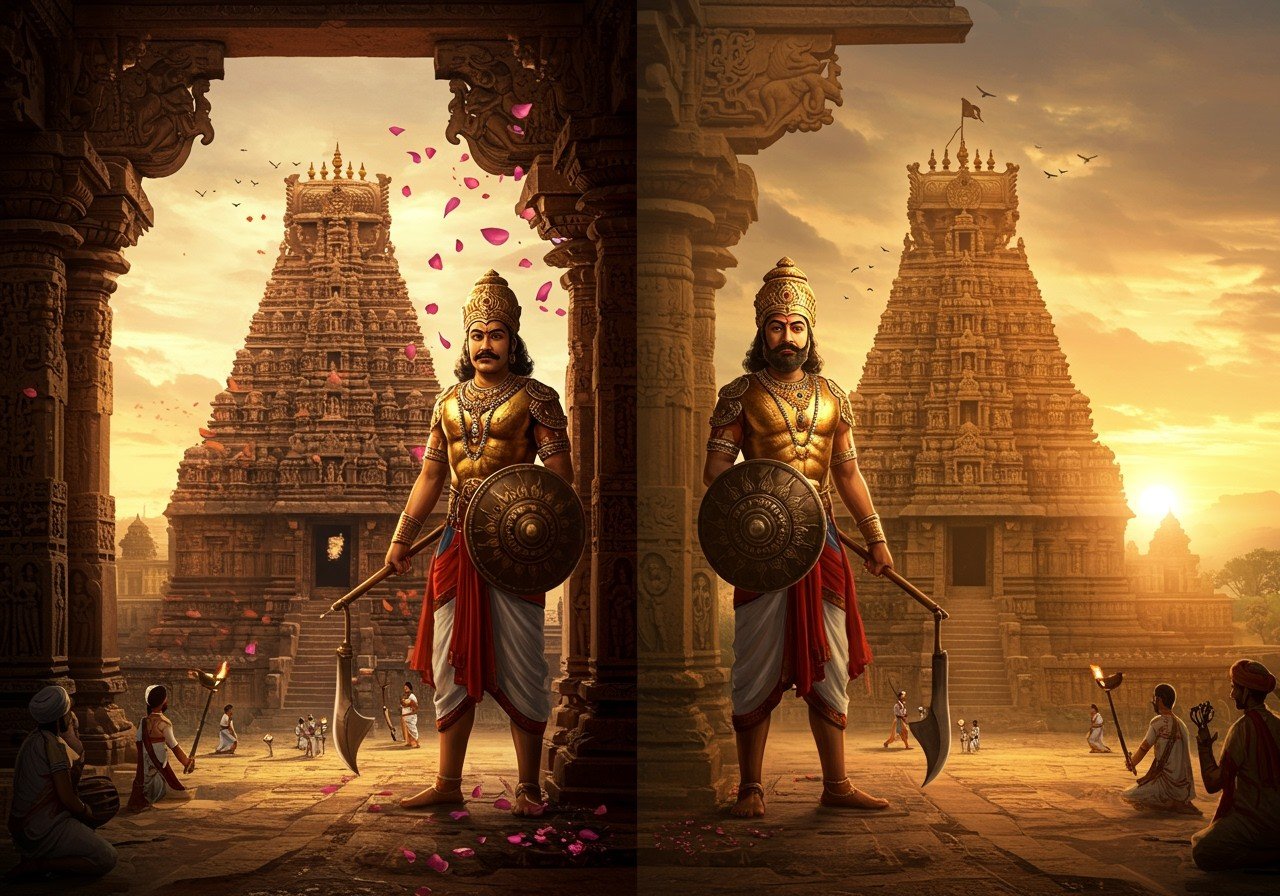
The Chalukya dynasty, a prominent power in South India, branched into two major divisions: the Eastern Chalukyas and the Western Chalukyas. This blog delves into the distinctions and commonalities between these two branches, examining their origins, political landscapes, cultural influences, architectural marvels, and lasting legacies. This exploration provides a comprehensive understanding of ancient India’s rich historical and cultural tapestry.
Origins and Historical Background
The Chalukya saga commenced in the early 6th century with the Western Chalukyas establishing their reign in the Deccan region. Later, in the mid-7th century, the Eastern Chalukyas emerged as a distinct branch in the Vengi region. The Deccan Plateau and the Vengi region, each with unique geographical characteristics, shaped the development of these two branches. Pulakeshin I laid the foundation of the Western Chalukya empire, while Kubja Vishnuvardhana founded the Eastern Chalukya dynasty. The pivotal Battle of Badami (Vatapi) marked the significant rise of the Western Chalukyas. Intriguingly, family connections and political alliances intertwined the destinies of these two branches.
Political Developments and Administration
Both dynasties implemented distinct administrative frameworks. The Western Chalukyas opted for a centralized system, while the Eastern Chalukyas adopted a more decentralized approach. Feudal lords and local chieftains played integral roles in governance within both branches. History witnessed notable conflicts, including the Western Chalukyas’ battles against the Pallavas and Rashtrakutas, and the Eastern Chalukyas’ clashes with the Cholas. Pulakeshin II of the Western Chalukyas and Raja Raja Narendra of the Eastern Chalukyas stand out as prominent rulers. Furthermore, both dynasties engaged in diplomatic relations and forged strategic alliances.
Cultural Contributions
The Chalukyas significantly shaped India’s cultural heritage. Both branches were patrons of the arts, literature, and religion. The Western Chalukyas made substantial contributions to Sanskrit and Kannada literature. The Eastern Chalukyas, conversely, left their mark on Telugu literature, fostering the growth of Buddhism and Jainism. Temple architecture and iconography played a central role in their cultural expression, with Chalukya culture influencing neighboring regions.
Architectural Achievements
The Chalukya dynasty is renowned for its architectural innovations. The Eastern Chalukyas favored the Dravidian style, while the Western Chalukyas embraced the Vesara style, a hybrid of Dravidian and Nagara styles. The Virupaksha Temple at Pattadakal stands as a testament to Western Chalukya architecture, while the Bhimeswara Temple at Draksharama showcases the Eastern Chalukya style. The Chalukya era witnessed advancements in construction techniques and stone carving. Their architectural designs were imbued with symbolic and religious meaning.
Economic and Social Structure
The economies of both branches relied heavily on trade routes, agriculture, and skilled craftsmanship. Guilds and merchant associations played vital roles in economic growth. The social hierarchy encompassed nobility, artisans, and commoners. However, land revenue systems and taxation policies differed between the two branches.
Key Differences and Conflicts: Eastern vs. Western Chalukyas
The Western Chalukyas, also known as the Chalukyas of Kalyani, held sway over the western Deccan region from the 10th to 12th centuries, with their capital at Kalyani (Basavakalyan). They frequently clashed with the Eastern Chalukyas of Vengi, particularly over the influence of the Cholas in the Vengi region. The Eastern Chalukyas, a distinct branch of the Chalukya dynasty, had significant interactions with the Cholas, often leading to conflicts with the Western Chalukyas. Both branches, despite their differences, contributed significantly to the artistic, architectural, literary, and cultural landscape of South India.
How Poojn.in Supports Your Cultural Journey
At Poojn.in, we recognize the profound connection between the Chalukya dynasties and Hindu religious practices. For those seeking to connect with the rich cultural heritage of both Eastern and Western Chalukyas, we offer authentic puja items that align with traditional worship methods preserved since the Chalukya period.
Our collection includes:
- Traditional brass and copper items similar to those used in Chalukya-era temples, allowing you to experience the reverence of ancient rituals in your own home. Our handcrafted pieces are meticulously designed to reflect the artistry and craftsmanship of the era.
- Pure cotton vastras and dhoti, essential for temple visits and pujas, crafted from the finest cotton and embodying the purity and tradition of Chalukya attire. Experience the comfort and spiritual significance of these garments.
- Authentic kumkum and other puja materials that maintain the sanctity of ancient rituals, sourced with utmost care and reverence to ensure the authenticity and purity of your worship experience.
- Temple bells and deepams crafted following traditional designs, echoing the sounds and illuminating the spirit of Chalukya temples in your personal space. Each piece is carefully crafted to honor the rich artistic heritage of the dynasty.
These items are particularly relevant for:
- Daily puja rituals that continue from Chalukya times, allowing you to connect with the spiritual practices of your ancestors.
- Temple offerings following historical traditions, honoring the rich cultural heritage of the Chalukyas.
- Maintaining authentic worship practices at home, creating a sacred space that resonates with the spiritual energy of the Chalukya period.
We ensure all products meet the highest standards of purity and authenticity, just as they would have been during the Chalukya period. Visit Poojn.in to explore our complete range of traditional puja items that help preserve these ancient customs in modern times.
For bulk orders for temples and religious institutions, please contact our customer service team.
Conclusion
The Eastern and Western Chalukyas indelibly shaped the course of South Indian history. Each branch carved its unique identity through distinct contributions and characteristics. The Western Chalukyas distinguished themselves through centralized governance and the distinctive Vesara architectural style. The Eastern Chalukyas, on the other hand, excelled in decentralized administration and Dravidian architecture. Both dynasties enriched the cultural, economic, and social fabric of their respective regions. Their legacies endure through magnificent temples, literary works, and administrative systems. The Chalukyas serve as a powerful reminder of India’s rich and diverse heritage. Understanding their history allows us to appreciate the depth of our cultural roots and the remarkable achievements of our ancestors.


